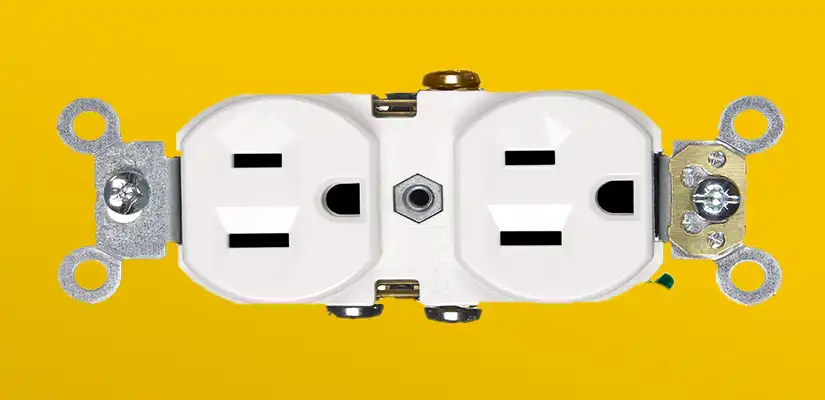
Mr. Electric explains why upgrading two-prong outlets is essential for safety and code compliance.
|
Wondering if you really need to replace two-prong outlets in your home with newer three-prong outlets? Replacing two-prong outlets is ideal for safety, but there's more to swapping out your outlets than a couple of screws, a new receptacle box, and some basic wiring.
What's the Big Deal with That Extra Prong?
Two-prong outlets were standard in homes built before the 1960s. Two-prong outlets cannot be grounded, lacking the ground wire that provides protection from electrical surges. Having no ground wire puts you and your family at risk of:
- Shock
- Electrical fire
- Damage to expensive electronics and appliances
When You Were a Kid, It Was Bad to Be Grounded
But as a homeowner, being "grounded" is both good and important. What does it mean for an outlet to be "grounded"? Every outlet, even a two-prong outlet, has a hot wire for delivering electricity, and a neutral wire for sending electricity back to the main electric panel. Without the third wire (the "ground"), if too much electricity is delivered to an outlet, it has nowhere to go.
Ground wires create a safe exit for excess electricity. Down the electrical line, a large, properly grounded wire sunk deep into the dirt outside your home allows the excess electricity to be absorbed safely into the earth. Unfortunately, if most of the outlets in your home are two-prong, there's a good chance your home has not been grounded, either.
How Hard Is Changing a Two-Prong Outlet to a Three-Prong Outlet?
Adding a ground wire is the safest way to change a two-prong outlet to a three-prong, but it's not a project for novices. Professional installation is necessary because adding a ground involves attaching a new ground wire to your main electrical panel and running a new ground wire to each ungrounded outlet. This may require more than one ground wire addition, depending on how many of your home's circuits include ungrounded receptacles.
Your local Mr. Electric® can tell which outlets in your home have been properly and safely grounded, and if your home itself is grounded as well.
Not the First Owner of Your Older Home?
Don't assume just because your older home has been remodeled at some point, that your three-prong outlets are actually grounded. Have it confirmed by an experienced electrician. Inexperienced DIYers are quick to assume because they've simply swapped a two-prong receptacle for a three-prong one, that they've handled the situation. It's possible to install a three-prong outlet without connecting a ground wire. This puts subsequent owners of that home at risk, leaving them in the dark on the very real fire and shock risks lurking behind their walls.
Are there other fire safety hazards lurking in your home? Find out with the help of fire damage restoration company Rainbow Restoration, a fellow Neighborly® company, and their Home Fire Safety Checklist.
Replace Two-Prong Outlets with Mr. Electric
Replace the two-prong outlets in your home with safe, grounded three-prong outlets with the help of your local Mr. Electric. After addressing your outlet issues, your service provider will be happy to help you take stock of the rest of your home's outlets and identify ways to make your home safer and more functional. Call us today.
This blog is made available by Mr. Electric for educational purposes only to give the reader general information and a general understanding on the specific subject above. The blog should not be used as a substitute for a licensed electrical professional in your state or region. Check with city and state laws before performing any household project.

